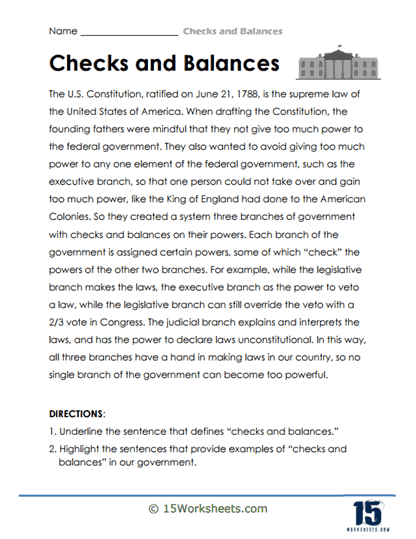Foundational Principles

Worksheet Description
This worksheet delves into the foundational principles behind the U.S. Constitution, which was ratified on June 21, 1788. The worksheet explains the meticulous planning of the founding fathers to ensure no segment of the federal government would wield excessive power, drawing parallels to the unchecked dominance once held by the King of England over the American Colonies. The material details the three branches of government — legislative, executive, and judicial — each designed with distinct powers, establishing a system where each branch can “check” the actions of the others. Students are guided through this structure with directions to pinpoint the definition of “checks and balances” and to identify examples of this principle in action.
The worksheet aims to impart knowledge about the core principle of “checks and balances” embedded within the U.S. government’s structure. By instructing students to underline and highlight specific portions of the text, the activity promotes active engagement with the content, fostering a deeper comprehension of how these mechanisms prevent any single branch from becoming overly powerful. The historical context provided, contrasting the American system with the unchecked power of the English monarchy, offers a perspective on the significance and rationale behind this design. Ultimately, the goal is to equip students with a foundational understanding of the Constitution’s protective measures, ensuring the democratic values of the nation are preserved.
